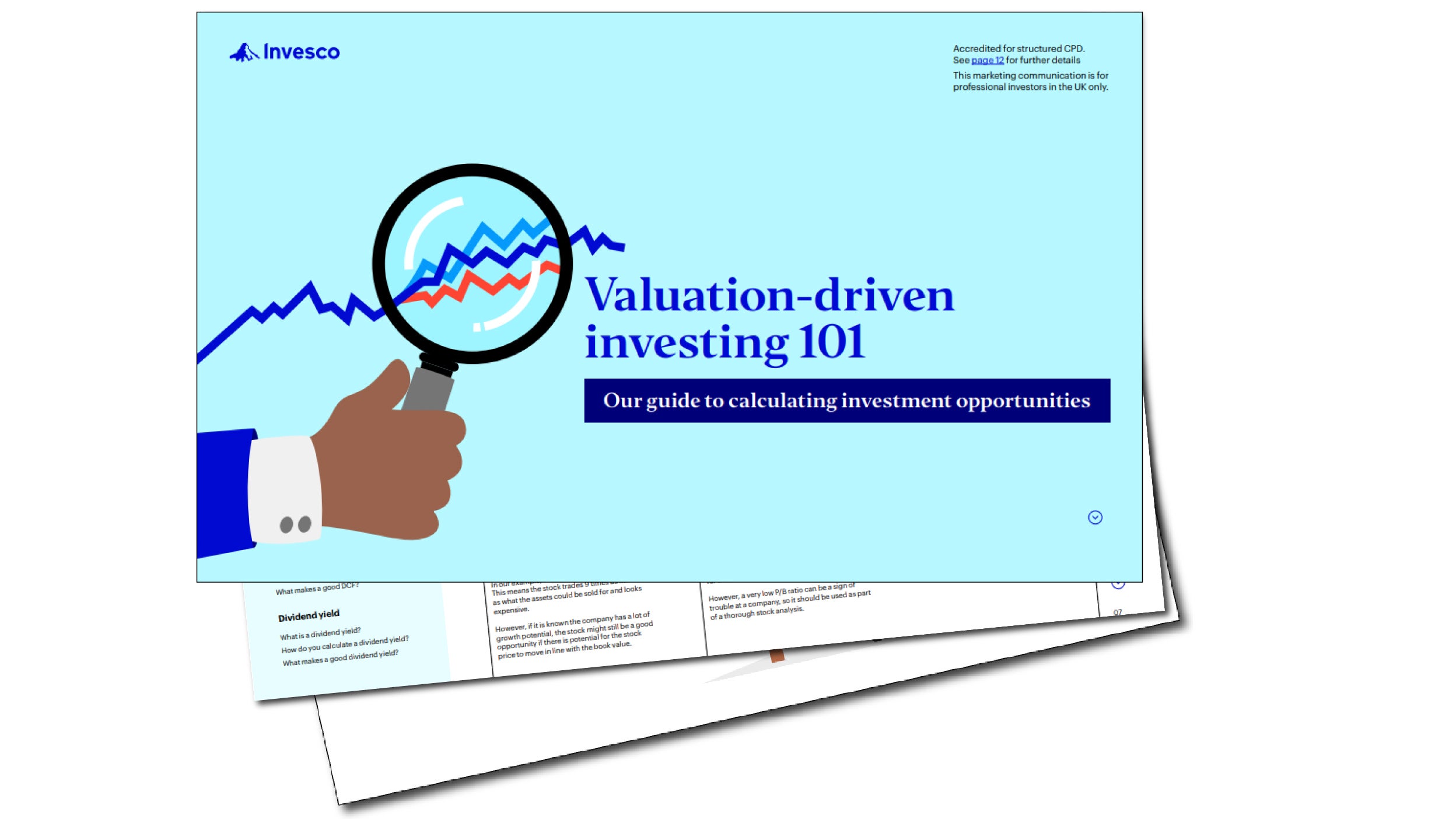Valuing investments: How to know if a stock is undervalued?
Our investment teams find value in the market by identifying stocks whose value isn’t reflected in the current share price. They then hold on to them until the broader market recognises what they’re worth.
Analysing financial metrics helps our investment teams find stocks which are undervalued throughout the world.
How do investment teams find value?
To help you understand how our investment teams find value, we have come up with a guide that teaches you some of the financial metrics they use to help them pick stocks in their portfolios. Take our test at the end to receive 45 minutes of structured CPD.
Here, you’ll find out how and why stocks come to be undervalued, how to recognise them and how this investment style could help drive positive outcomes for a portfolio.
In this guide, we also look at the financial metrics and ratios used to determine if a company’s valuation makes a good investment.
Step-by-step we break down how to calculate price-to-earnings ratios (P/E ratio), price-to-book ratios (P/B ratios), return-on-equity (ROE), discounted cash flows (DCF) and dividend yields. We provide you with the formulas so you can calculate them yourself.
By using fictitious companies as examples, you’ll learn how to interpret these financial metrics. Discover which of our apple tree firms has a good P/E ratio or find out what real estate company has a better P/B ratio.
But valuation driven investing is not without caveats and results need to be considered in the context of the company and the sector. To get the best investment results they should not be used just in isolation, instead a thorough stock analysis understanding using various metrics is needed.
Our approach to valuation investing
We offer investment opportunities in both the active and the passive space that make use of financial metrics and ratios to calculate a stock’s value.
This guide looks at these metrics, so you can discover how to do the calculations and understand if a company’s valuation makes a good investment.







